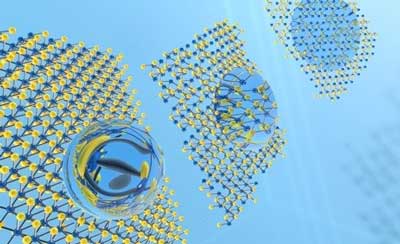 Researchers have developed a 'lotus effect' by incorporating atomic defects in nanomaterials, which could have widespread applications in biomedical field including biosensing, lab-on-a-chip, blood-repellent, anti-fouling and self-cleaning applications.
Researchers have developed a 'lotus effect' by incorporating atomic defects in nanomaterials, which could have widespread applications in biomedical field including biosensing, lab-on-a-chip, blood-repellent, anti-fouling and self-cleaning applications.
Wednesday, June 26, 2019
A water repellent 'nanoflower' for biomedical applications
 Researchers have developed a 'lotus effect' by incorporating atomic defects in nanomaterials, which could have widespread applications in biomedical field including biosensing, lab-on-a-chip, blood-repellent, anti-fouling and self-cleaning applications.
Researchers have developed a 'lotus effect' by incorporating atomic defects in nanomaterials, which could have widespread applications in biomedical field including biosensing, lab-on-a-chip, blood-repellent, anti-fouling and self-cleaning applications.
Experiment reverses the direction of heat flow
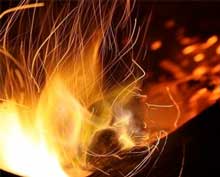 Scientists used quantum correlations to make heat flow from a colder to a hotter medium without adding external energy, affording a deeper understanding of the second law of thermodynamics.
Scientists used quantum correlations to make heat flow from a colder to a hotter medium without adding external energy, affording a deeper understanding of the second law of thermodynamics.
Perfect quantum portal emerges at exotic interface
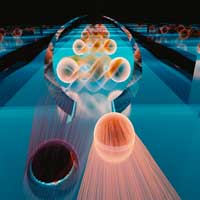 A junction between an ordinary metal and a special kind of superconductor has provided a robust platform to observe Klein tunneling.
A junction between an ordinary metal and a special kind of superconductor has provided a robust platform to observe Klein tunneling.
Using nanotechnology to remove diesel fuel from water and soil
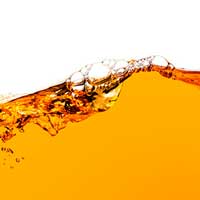 Researchers have developed a hydrophobic nanosponge to remove diesel fuel from contaminated water and soil.
Researchers have developed a hydrophobic nanosponge to remove diesel fuel from contaminated water and soil.
Atomic Motion is captured in 4D for the first time
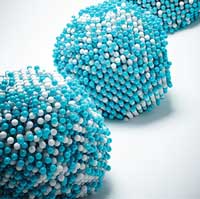 Scientists have gained a never-before-seen view of nucleation - capturing how the atoms rearrange at 4D atomic resolution (that is, in three dimensions of space and across time). The findings differ from predictions based on the classical theory of nucleation that has long appeared in textbooks.
Scientists have gained a never-before-seen view of nucleation - capturing how the atoms rearrange at 4D atomic resolution (that is, in three dimensions of space and across time). The findings differ from predictions based on the classical theory of nucleation that has long appeared in textbooks.
The fundamental physics of frequency combs sheds light on nature's problem-solving skills
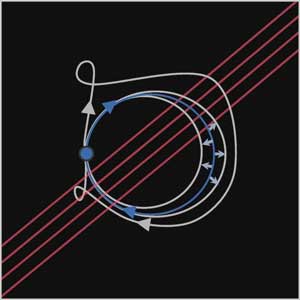 Insight into laser frequency combs improves understanding, advances technology.
Insight into laser frequency combs improves understanding, advances technology.
Shell increases versatility of nanowires
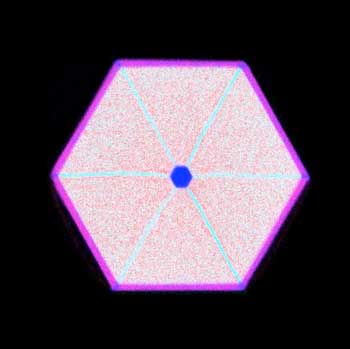 Researchers have managed to produce nanowires with operating wavelengths that can be freely selected over a wide range - simply by altering the shell structure.
Researchers have managed to produce nanowires with operating wavelengths that can be freely selected over a wide range - simply by altering the shell structure.
Bleach-induced transformation for humidity-durable MOF air filters
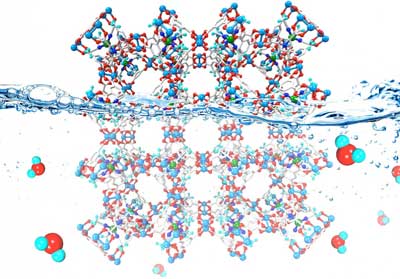 Adding hydroquinone, a skin-bleaching ingredient, to a well-known metal organic framework (MOF) changes its copper ions in a way that makes this porous material exceptionally stable in water.
Adding hydroquinone, a skin-bleaching ingredient, to a well-known metal organic framework (MOF) changes its copper ions in a way that makes this porous material exceptionally stable in water.
Translating proteins into music, and back
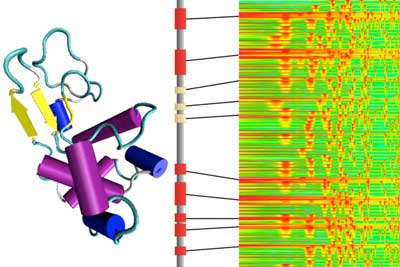 By turning molecular structures into sounds, researchers gain insight into protein structures and create new variations.
By turning molecular structures into sounds, researchers gain insight into protein structures and create new variations.
Hubble finds electrically-charged buckyballs in interstellar space
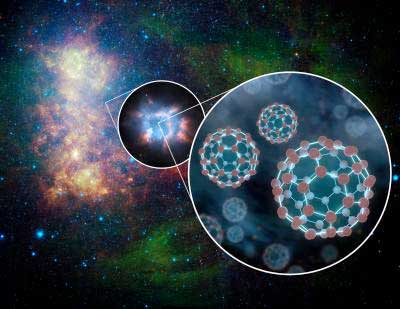 Scientists using NASA's Hubble Space Telescope have confirmed the presence of electrically-charged molecules in space shaped like soccer balls, shedding light on the mysterious contents of the interstellar medium (ISM) - the gas and dust that fills interstellar space.
Scientists using NASA's Hubble Space Telescope have confirmed the presence of electrically-charged molecules in space shaped like soccer balls, shedding light on the mysterious contents of the interstellar medium (ISM) - the gas and dust that fills interstellar space.
Subscribe to:
Comments (Atom)
